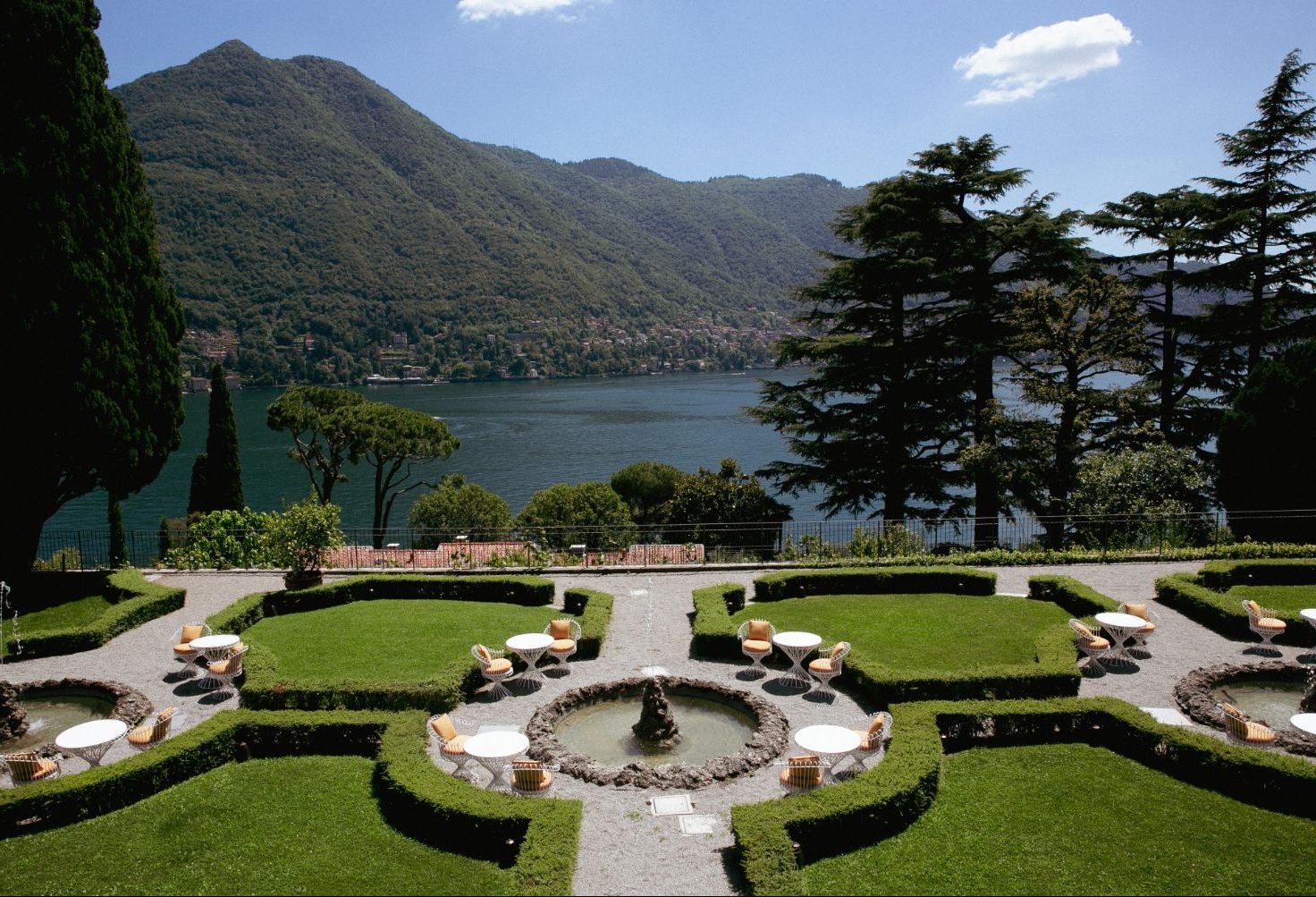
16 Elevated European Summer Sojourns
The new adventures, properties and places to indulge across the continent this season.
Related articles
An unsurpassed insight into what’s new and exciting on the continent this summer: exclusive Greek moments, gilded Paris experiences, Denmark’s cool charms, train travel dripping in Belle Époque splendour, and so much more.
From Europe, With Love
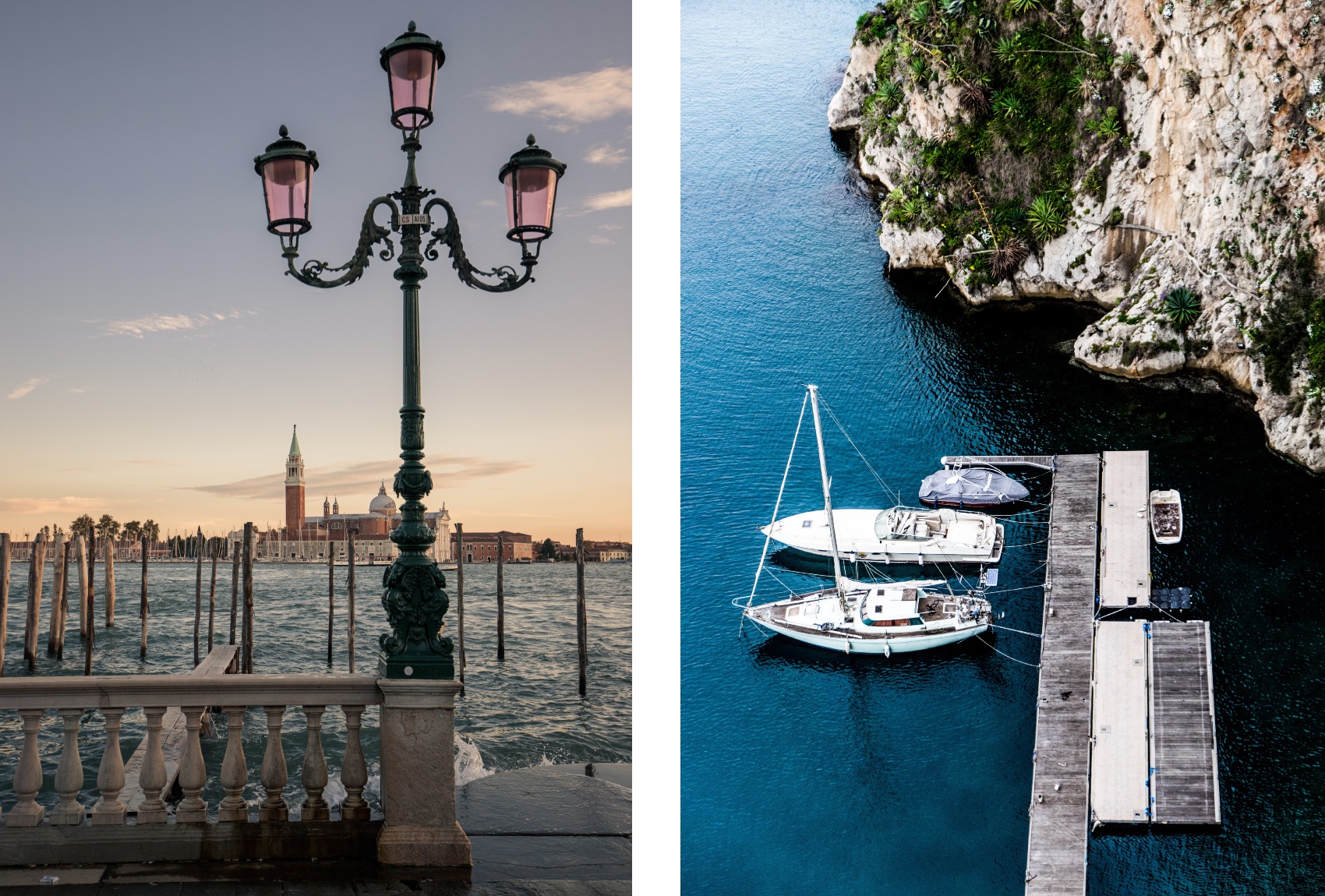
Whether you’re a James Bond fan or not, few would pass up the chance to live like the famed British spy for a day—or a couple of weeks. Now you can do just that thanks to a new partnership between EON Productions, makers of the James Bond empire, and upscale travel company Black Tomato—the first, and only, official 007 travel partner. It begins in March 2023 with 60 limited-edition private trips, each paying homage to Bond’s memorable adventures through a host of immersive experiences, beginning in London, Bond’s home base, before moving to Paris, Monaco, Lake Como and Venice. At each stop, expect high-octane experiences—whether in cars, yachts, helicopters or on trains.
Pull out your bow tie for VIP access to Monaco’s Casino de Monte-Carlo, which starred in Bond films GoldenEye (1995) and Never Say Never Again (1983). Get set to waterski along the shore of Moltrasio and soar in a seaplane over Bellagio at Lake Como (Daniel Craig did the same during 2006’s Casino Royale). Then, north of Paris, Château De Chantilly—the sumptuous lair of evil industrialist Max Zorin in A View to A Kill—becomes exclusively yours for an equestrian adventure through enchanting Chantilly Forest.
Denmark’s Capital Of Cool
Danes have long inspired design and architectural enthusiasts. Small wonder, then, that Copenhagen has been designated the UNESCO World Capital of Architecture in 2023. This year, the city will host a series of events exploring how architecture and urban planning can contribute to achieving the UN’s 17 Sustainable Development Goals. Case in point: the new Opera Park along Copenhagen’s waterfront, drawing inspiration from romantic 19th-century gardens and featuring systems that reuse rainwater and recyclable materials.
Lauded Danish chef René Redzepi also has his eye on sustainability at his three-Michelin-starred restaurant noma, with a culinary ethos dedicated to low food miles: don’t miss out before the restaurant closes for good in 2024. After eating, you don’t have to travel far to reach soon-to-open seaside resort, Gilleje Sø- og Havbad, just 50 kilometres from Copenhagen. The dreamy retreat occupies a restored heritage building on the Danish Riviera, transformed with 40 rooms, an outdoor pool, rooftop terrace and spa.
uia2023cph.org; noma.dk; khr.dk
All Eyes On Evrima
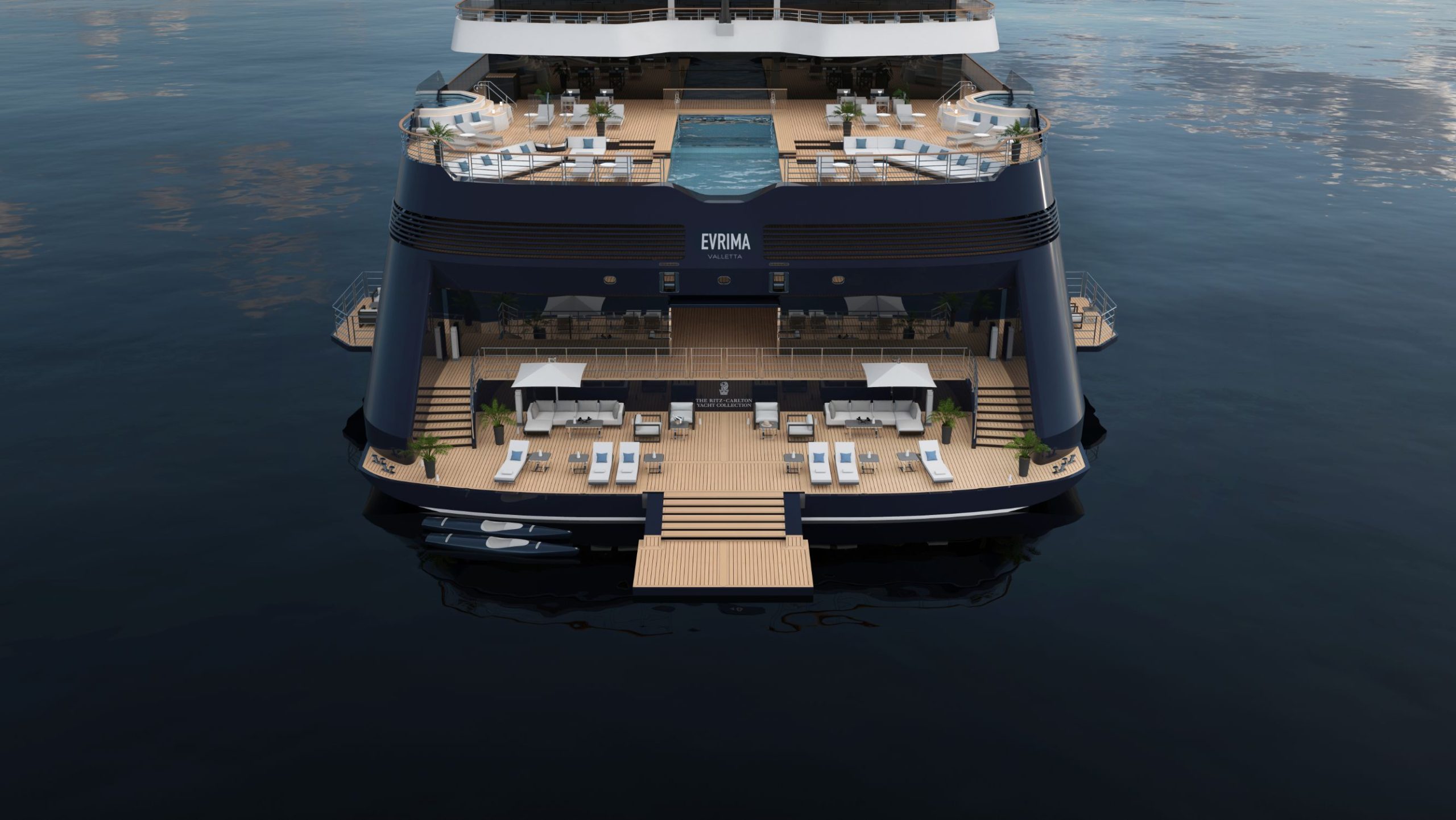
Having sailed her maiden voyage in October 2022, the Ritz-Carlton Yacht Collection’s inaugural ship, Evrima, is doing what every savvy traveller seeking sunshine does over the Northern Hemisphere’s warmer months—making a beeline for the Mediterranean.
You’re sharing the yacht with just 297 other guests (there are almost as many crew), checked in to suites that come with floor-to-ceiling windows and private balconies—the Owner’s Suite’s alfresco whirlpool is a nice touch. More bubbles await on the pool deck and marina, the latter of which provides easy access to the ocean and water toys when the ship anchors.
On-board indulgence can be found at six restaurants and bars, including specialty dining room S.E.A, conceptualised by chef Sven Elverfeld of Aqua, the three Michelin-starred restaurant at The Ritz-Carlton in Wolfsburg.
ritzcarltonyachtcollection.com
Greece Is The Word
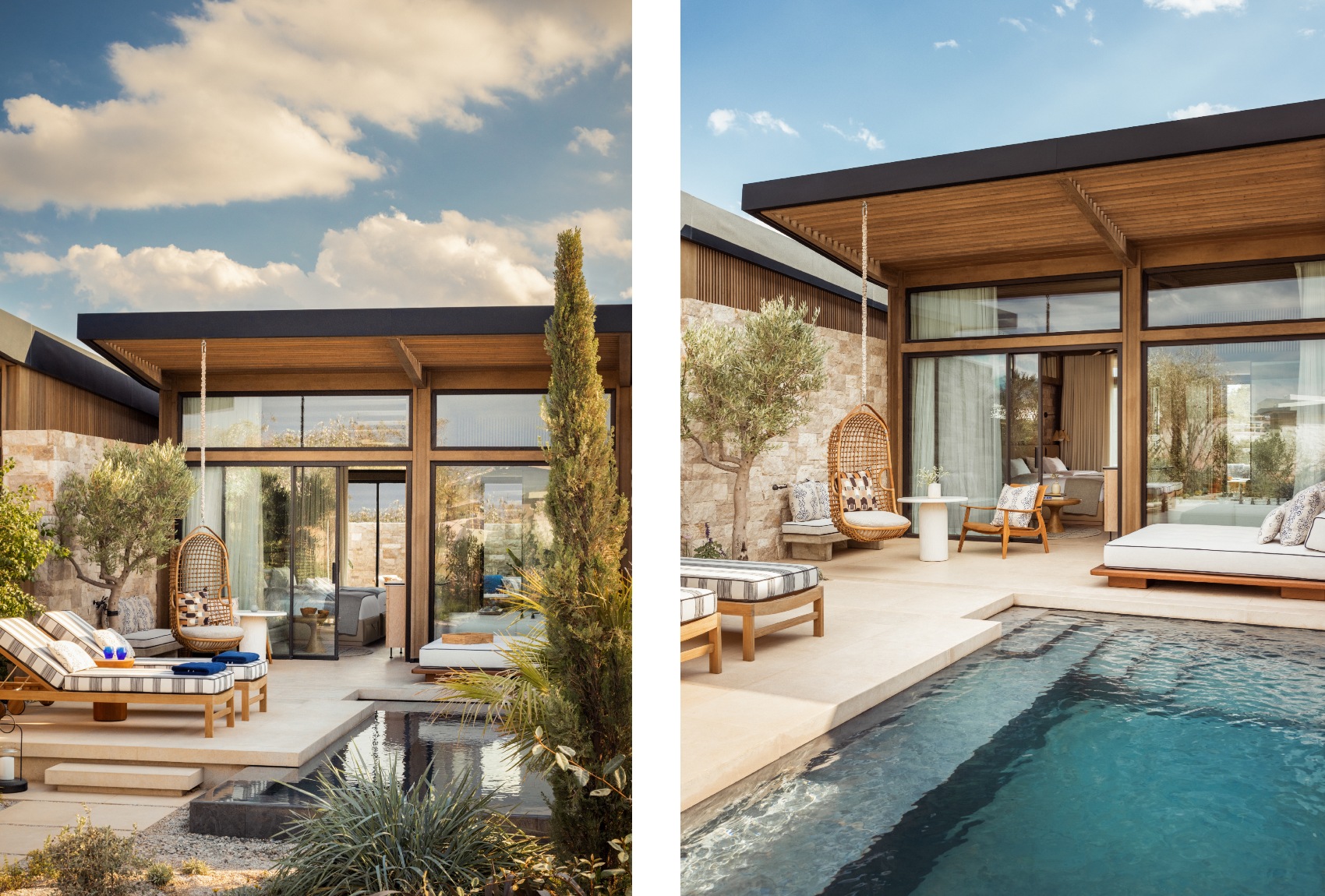
The global jet-set have been visiting the Athenian Riviera for decades, drawn by aromatic pine forests that fringe thermal springs and opaline water. The glamorous Astir Palace Hotel has been an A-list favourite since the 1960s, with everyone from Frank Sinatra to Lady Gaga spending the night. More recently, Four Seasons gave the property a chic makeover, adding beach clubs, restaurants and a spa.
Its reputation will be elevated when the One&Only Aesthesis opens here this year, set over 21 waterside hectares. Design takes inspiration from local culture, heroing woven leather, muted tones and accent patterns. The Chenot Spa, courtesy of the Swiss wellness brand, will be a highlight.The hotel is within easy reach of the new Ellinikon Experience Park, built on the site of Athens’ former airport. It’s a stunning example of re-greening, and home to a Zen garden, interactive water maze, fitness equipment and forest playground.
fourseasons.com; oneandonlyresorts.com; experiencepark.theellinikon.com.gr
Loving Lake Como
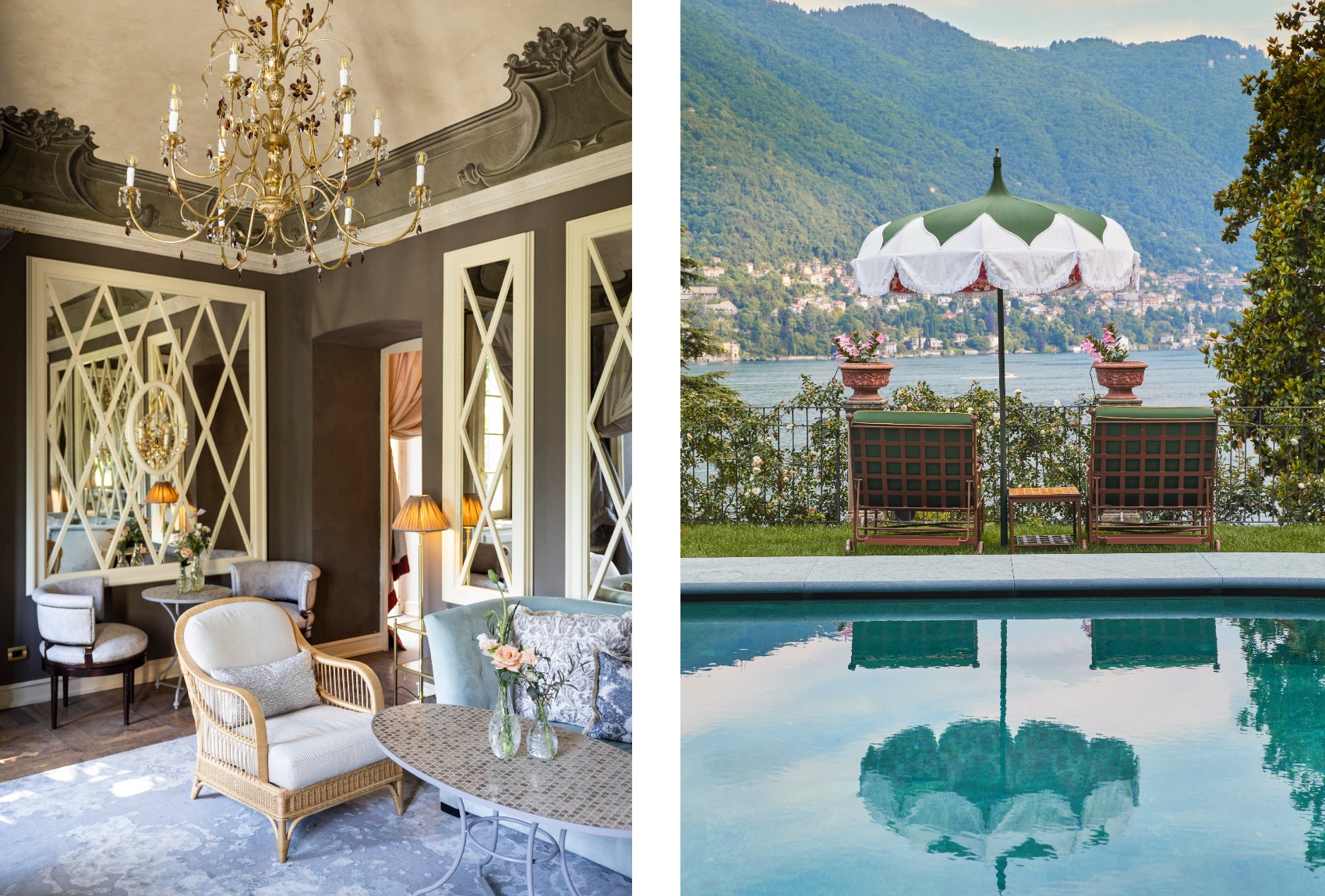
In Northern Italy’s Lombardy region, Lake Como has seduced painters, philosophers, musicians and poets for time immemorial. More recently, its dramatic beauty in the foothills of the Alps has drawn the fashionable and famous, who come here to explore atmospheric waterside resort towns by day, and sip spritz in seriously sexy hotels by night. Arguably the prettiest perch of them all is Villa Passalacqua.
The historic 1787 property seems made for romantic trysts, from its manicured garden nooks of olive trees and mimosa to the 24 deliciously detailed rooms, each individual in design and with heart-stopping lake views. The piece de resistance is the former music room with Giocondo Albertolli frescoes, now the Bellini Suite, where the maestro composed. The Casa Al Lago is a sleek private house, and there are additional accommodations in the Palazz, which also has an intimate spa. Order an Aperol spritz to be delivered poolside, where a 200-year-old greenhouse has been repurposed as a casual restaurant with JJ Martin-designed floral furnishings. Or in the dining room, snack on Italian sweets or discuss dinner with the chef.
Le Grand Tour
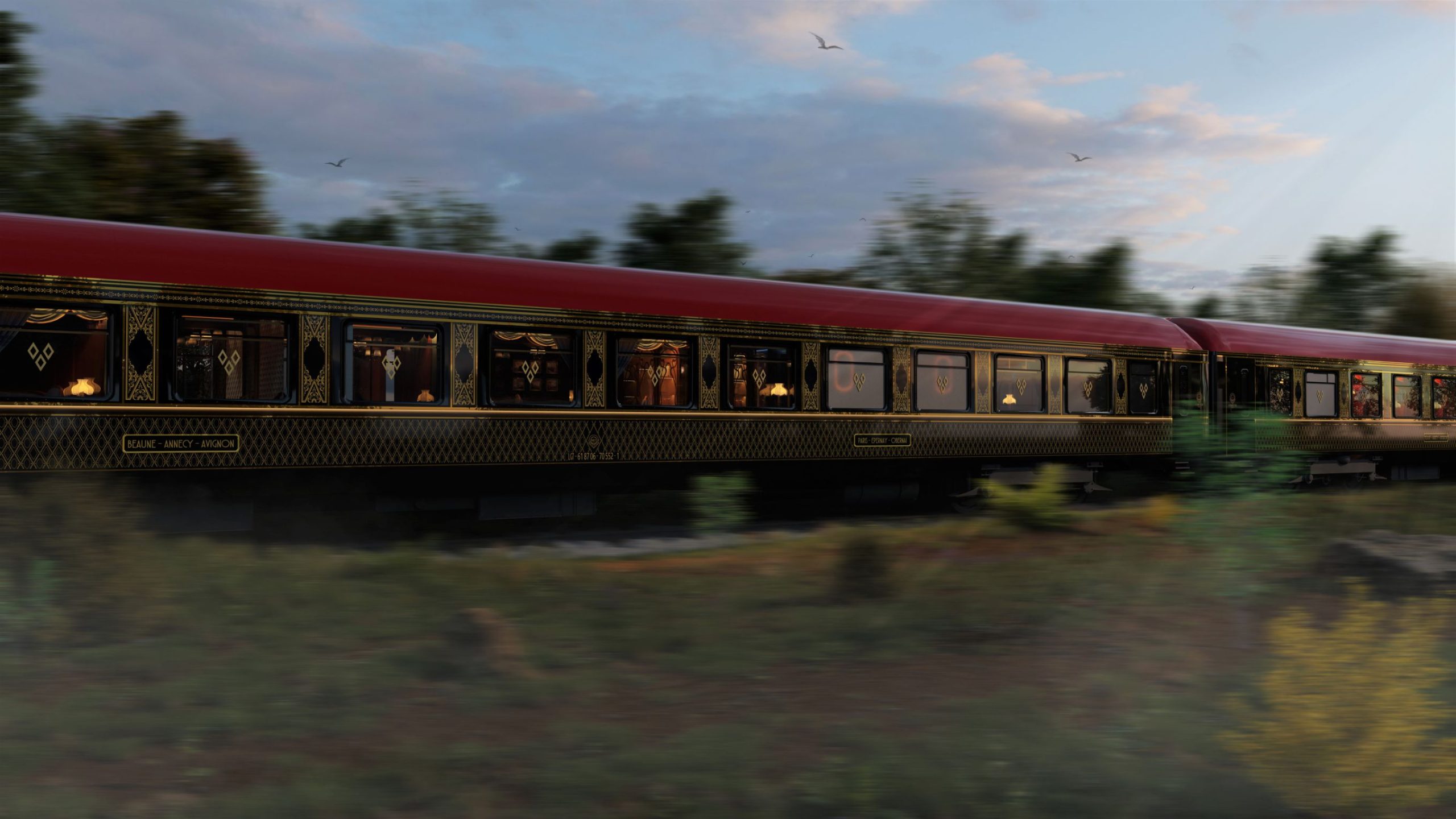
Whether murder mysteries or love affairs, there’s something about long-distance rail travel that inspires drama. The team behind historic French theme park Puy du Fou will add to the spectacle when they launch Le Grand Tour in June. This six-day, 4,000-kilometre journey traverses Champagne, Burgundy and Lake Annecy, pausing to visit Avignon’s Palace of the Popes and some of the 300 châteaux of the Loire Valley—while you’re here, sit under the stars for a performance of Puy du Fou’s famous show, the Cinéscénie. After days of exploring, meals and music are enjoyed in swanky dining carriages. And with space for just 36 passengers, every experience is sure to be exclusive.
Mallorca’s Moment
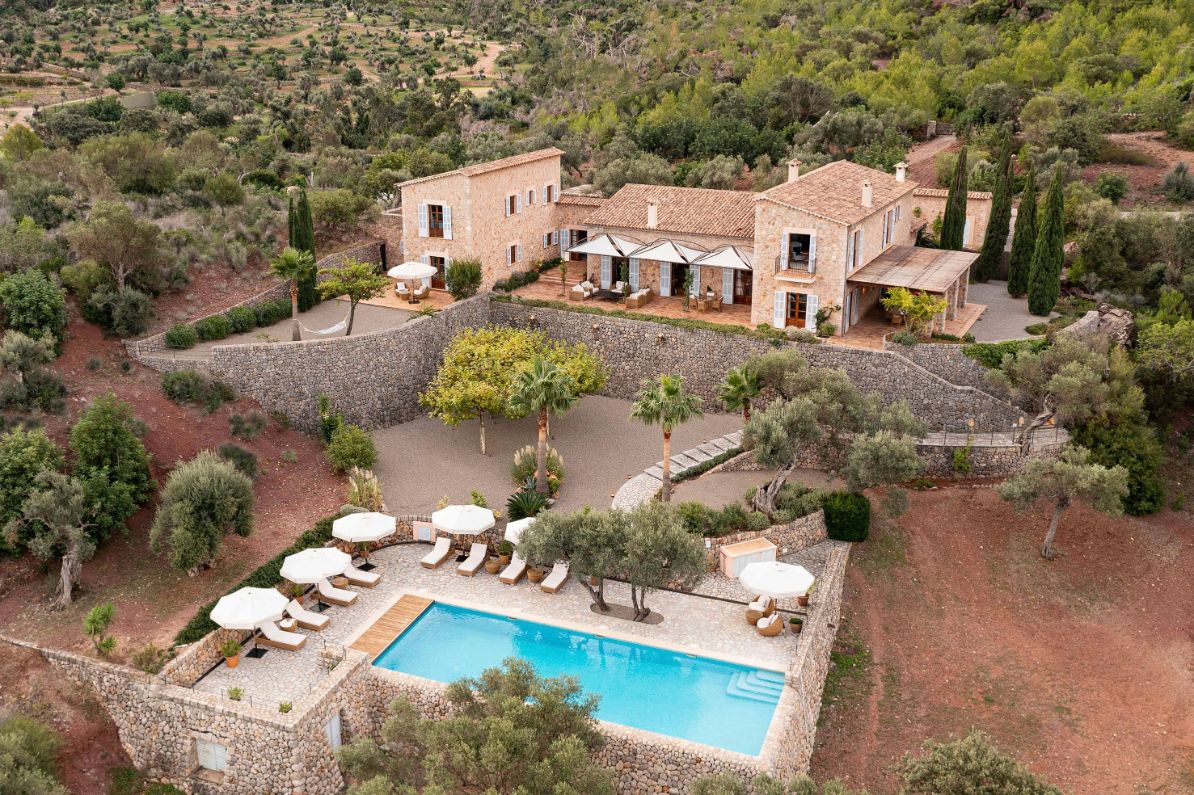
Sir Richard Branson once famously quipped that he’s not a fan of hotels … unless they are his own. It’s perhaps understandable once you’ve glimpsed the British billionaire’s latest lodging on the Spanish isle of Mallorca. Son Bunyola will skyrocket Branson’s Virgin Limited Edition portfolio to new luxury heights when it reveals 26 new suites on August 1. Joining Branson’s three existing villas (Sa Punta de S’Aguila, Son Balagueret and Sa Terra Rotja) on a 325-hectare estate—the centre of which is an historic finca (manor house)—the new hotel includes two suites located in former defence towers, each with ravishing vineyard views.
While Mallorca and its Balearic sisters have traditionally enjoyed a wild party vibe, this pocket of the island—part of a World Heritage Site—exudes nothing but class, from the hotel’s drop-dead-gorgeous GRAS Reynés Architecture Studio-designed interiors to its two restaurants, each paying homage to this produce-blessed region of Europe.
If you tire of the pool, stroll through olive groves fringing the estate to reach pebbly Son Bunyola beach—it’s so off the beaten track, you may well have it all to yourself.
Ahpo For All Seasons
Don’t expect much change from $4.4 million when you charter new superyacht Ahpo for a week, exploring the Mediterranean. But for the price tag, you’re given access to a long list of indulgences, from a helipad to a beach club, pool and cinema, spread over the yacht’s 115 metres.
While there’s space for just 16 guests on board, Ahpo comes with a crew of 36 to manage your every whim, whether that’s dropping anchor to shop in Saint-Tropez or picnic in Portofino, or jumping in a tender for an afternoon of fishing. The owner’s requirement for the yacht was that it be refined yet family friendly, which means there’s room for water toys for kids of all ages—think WaveRunners, waterskis, seabobs, kayaks and windsurfers—as well as a dancefloor, best enjoyed when your crew fire up the yacht’s underwater lights and plug in the karaoke machine. After a night of partying, be sure to make the most of the spa, hammam and sauna, and huge fitness centre with floor-to-ceiling windows.
For all her style, Ahpo is also sustainable with high eco-credentials, including an innovative heat recovery system and dynamic positioning.
French Tryst
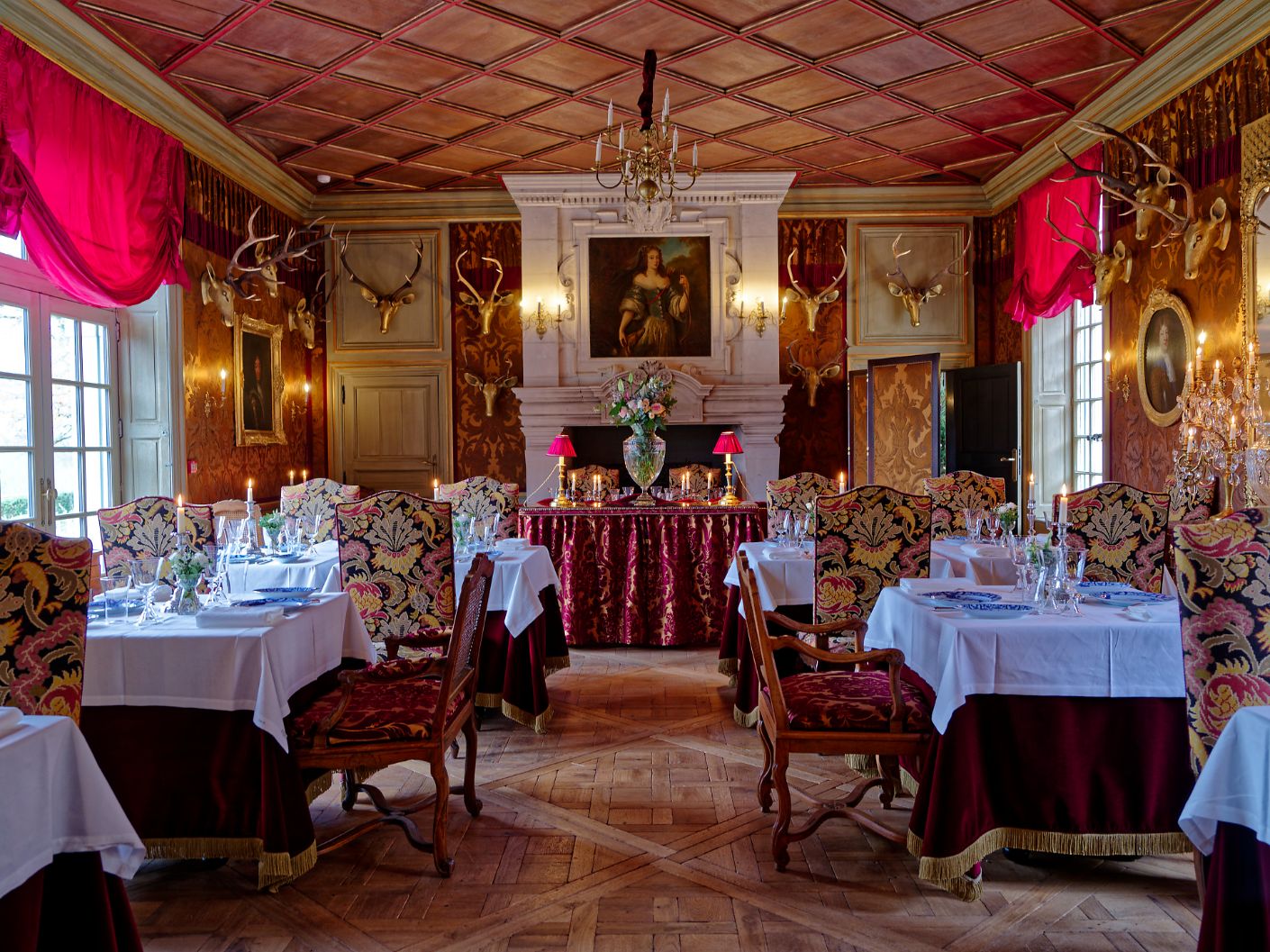
There’s a reason why the Loire Valley has been the chosen retreat of the French elite for centuries—it’s the perfect backdrop for aristocracy and royalty to erect fairy-tale châteaux. From Renaissance-era mansions to fortified castles, there are more than 300 sprinkled across the countryside. Check in to freshly minted Château Louise de La Vallière, an opulent 20-room Relais & Châteaux hotel where the staff dress in period wear, deer roam between centuries-old oak and cedar trees, and you can dine on dishes King Louis XIV once ordered.
The spirit of the King’s era has been brought back to life, with meticulous attention to detail at the hands of French designer Jacques Garcia. Rooms are named after historical figures, each individually designed with swathes of marble, textured wallpaper, wood panelling and antiques.
There’s another royal (and Relais & Châteaux) connection at nearby Fleur de Loire, a palace conceived by Gaston d’Orléans (son of King Henry IV), reimagined as an enchanting hotel mid-2022. There are plenty of reasons to linger, from the duplex suites with views of the Loire River to the Sisley Spa. Tasting menus are prepared at double-Michelin-starred Christopher Hay’s eponymous on-site restaurant, heroing wagyu from the estate’s own farm and black bass from Solonge.
fleurdeloire.com; chateaulouise.com
Linger In Venice
For those here on an extended stay, the recent introduction of an entry fee of between three and 11 euros means you’ll likely glimpse a calmer side to Venice’s canals, cathedrals and architecturally significant buildings. And if visiting for the La Biennale di Venezia (11 February-26 November) you’ll definitely want to linger. This is one of the world’s oldest and largest creative celebrations, a whirlwind of events, performances and exhibitions.
Stay somewhere stylish—might we suggest The Langham, Venice. The brand’s first Italian property sits on the island of Murano with direct frontage to the Venetian Lagoon in the former Casino Mocenigo, an architectural grande dame from the 1600s.
Otherwise, there’s the Rosewood Venice, housed in the beautiful Palazzo Donà Giovannelli, a 15th-century building created by famed architect Filippo Calendario. The canal-side setting grants easy access to some of those sites you’ll (hopefully) no longer have to queue to visit.
labiennale.org; langhamhospitalitygroup.com; rosewoodhotels.com
Rail’s New Heights
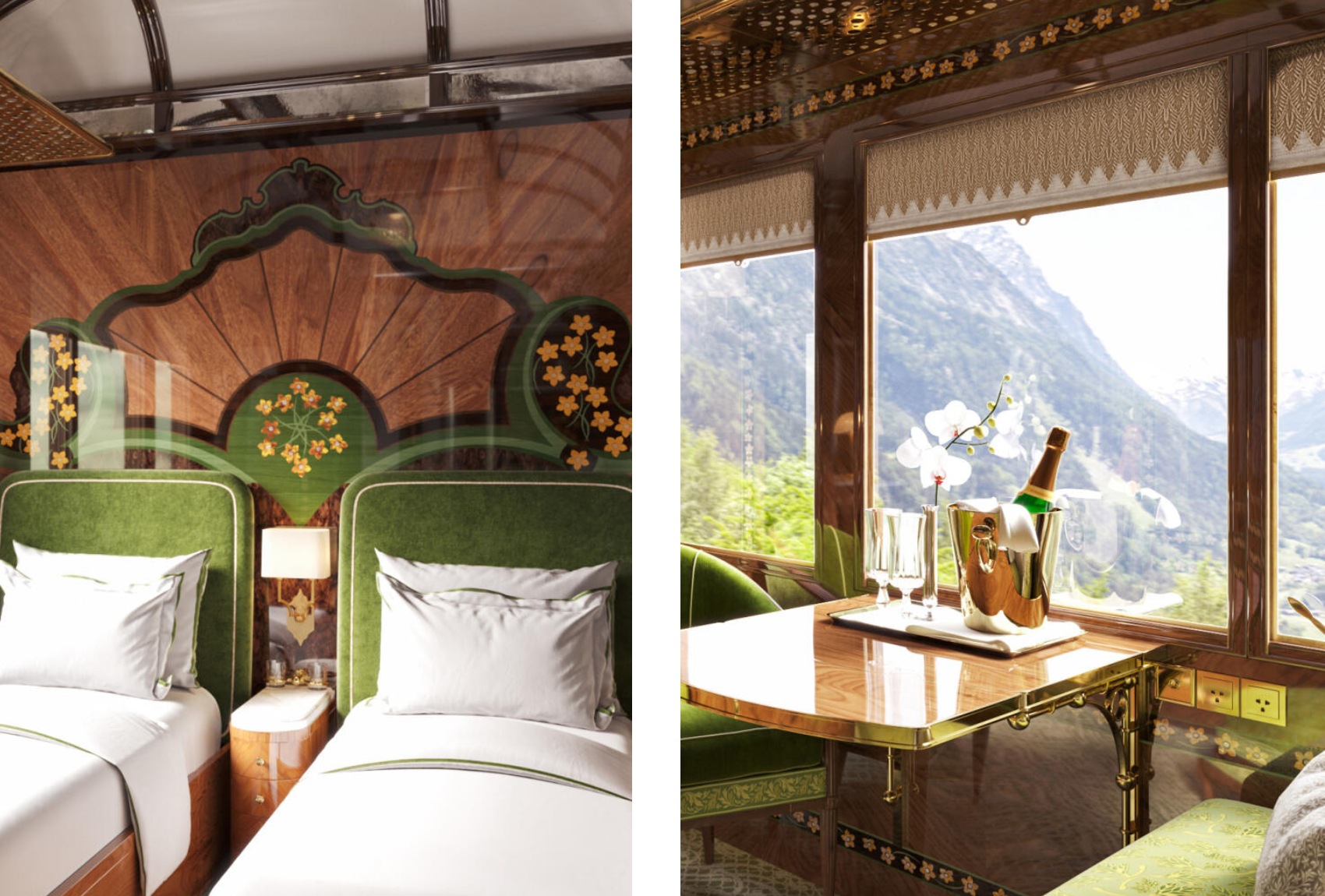
Riding the Venice Simplon-Orient-Express has always been a glamorous affair. In June, it will become even more exclusive with the unveiling of eight new suites on the Belmond-owned train. French craftsmen restored two original ’20s and ’30s carriages, accommodating four suites each.
Design is inspired by the dramatic landscapes unfolding outside the train’s windows, capturing four regions—la campagne (countryside), les montagnes (mountains), les lacs (lakes) and la forêt (forest). Book your journey from December 2023 to enjoy a new route into the French Alps, between Paris and three stations in the heart of the mountains: Albertville, Moûtiers and Bourg-Saint-Maurice.
Tuscany’s Time To Shine
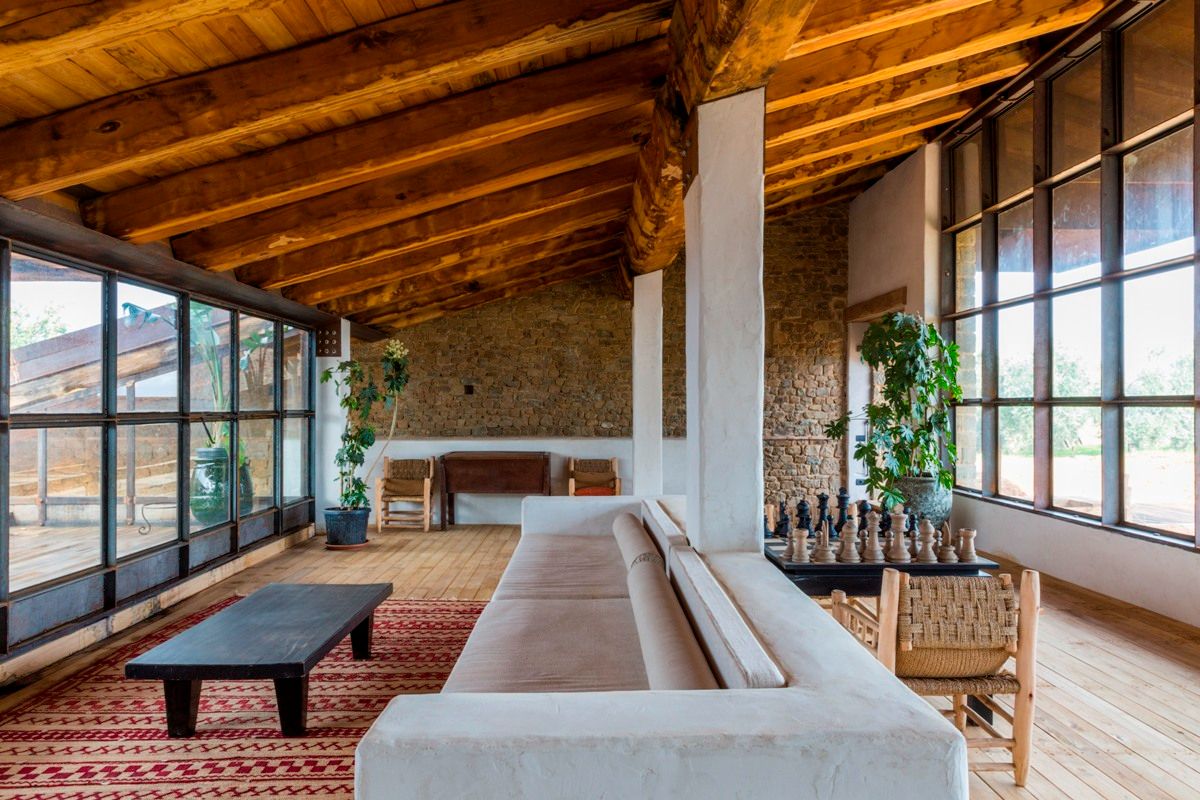
The walled hamlet of Magliano in Toscana dates to Etruscan times. Life here is slow, sweet and blissfully simple, particularly if you’re checked in to the town’s namesake 8,000-square-metre villa, set on a hillside estate surrounded by olive groves and historic vineyards.
Local Italian architects and artists were called in to transform the former monastery into this striking abode—a jaw-dropping union of stone, brick, glass and wood. Décor is pared-back yet polished, with no luxury spared across the seven bedrooms, formal dining room and professional kitchen.
This part of Tuscany, close to the Maremma coast, is known for its bountiful produce, and you can sample the wares without leaving the estate—the 80-hectare grounds come with an organic vegetable garden, lemon grove and orangery to explore and pluck at your leisure. The cellar, meanwhile, is stocked with wine and olive oils made by the villa’s own vintners and farmers. If you venture into town, atmospheric lanes are home to restaurants specialising in fish soup, wild boar pasta and (in season) truffled everything.
Scottish High

Draw up a list of 40 of your favourite people (and single malts) and ride the Scottish rails in style when chartering Belmond’s entire Royal Scotsman train. The stations you choose to pause at and activities you do on this journey through the bucolic Scottish Highlands is completely customisable, although the train’s concierge will likely have a few ideas. Perhaps an exclusive visit to the neo-gothic Mount Stuart mansion on the Isle of Bute? A private whisky tasting in your distillery of choice?
There’s plenty of liquid-gold inspiration in the train’s bar carriage, which has more than 60 whisky varieties. Across the train’s 10 vintage-inspired cars there’s also an open-air veranda and cabins designed in dark polished wood and brass, with Scottish wools, tartans and antique prints. There’s even a spa on board.
Red Marks The Spot
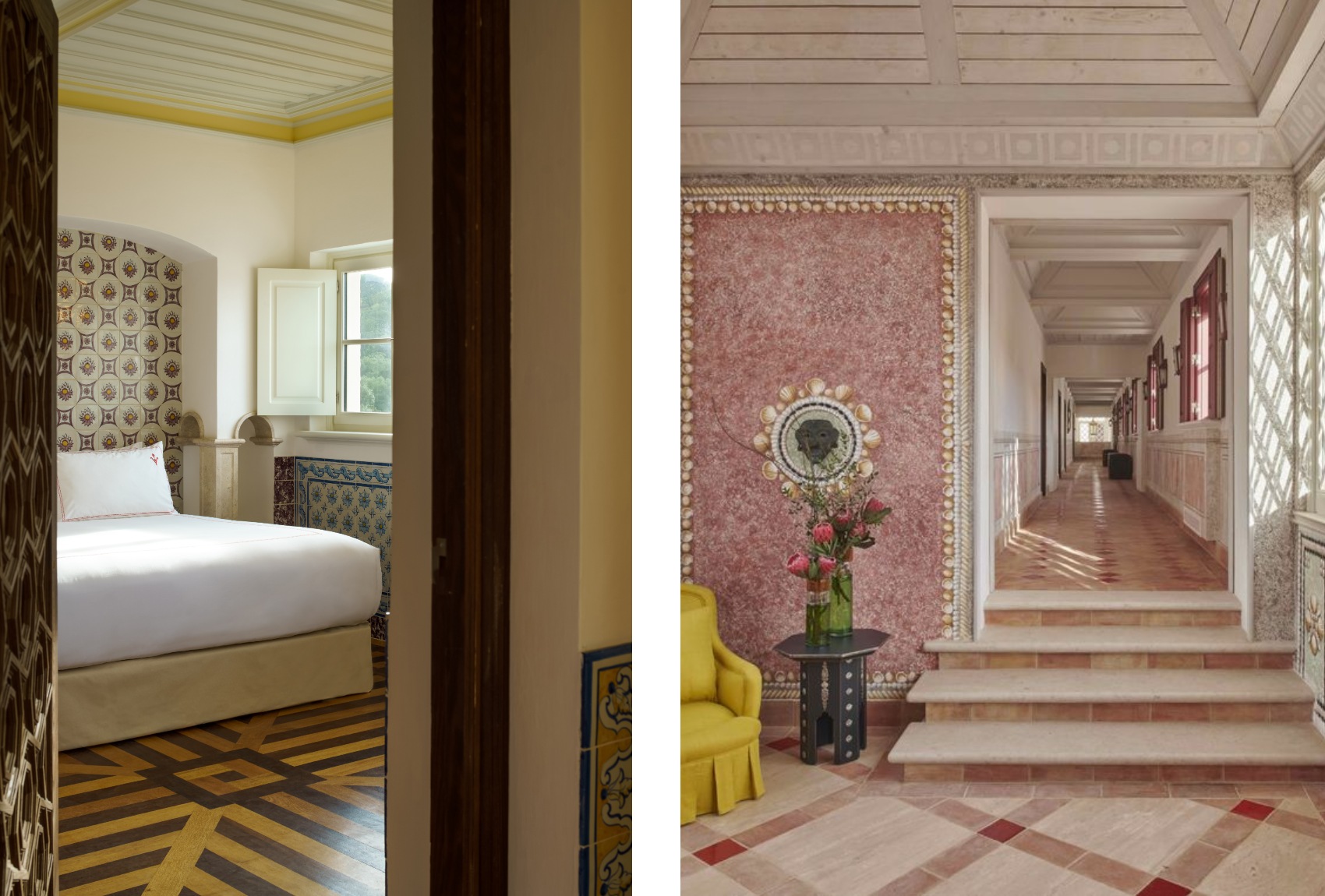
Arguably the world’s most famous shoe designer, Christian Louboutin’s distinctive red-soled stilettos are the stuff fashion dreams are made of. Now, the guru is turning his craftsmanship to hotels. When it opens in mid-2023, 13-room Vermelho will be “Simple outside; impactful inside,” says Louboutin modestly. The goal being, he adds, to let the surrounding countryside of Portugal’s seaside Alentejo region, 130 kilometres south of Lisbon, do the talking.
The bucolic setting attracts some of the country’s most applauded artisans, whom Louboutin intends to hero across Vermelho’s individually designed rooms and public spaces. He’s committed to hand-selecting the furniture, ceramics, fabrics and art that will star throughout; think feature walls of Portugal’s famed glazed blue ceramic tiles, delicate plates commissioned from local potters, and produce sourced from the fields that surround, to be served in on-site restaurant Xtain. And expect accents of Louboutin’s shade. Vermelho means “red” in Portuguese, after all.
Capital Assets
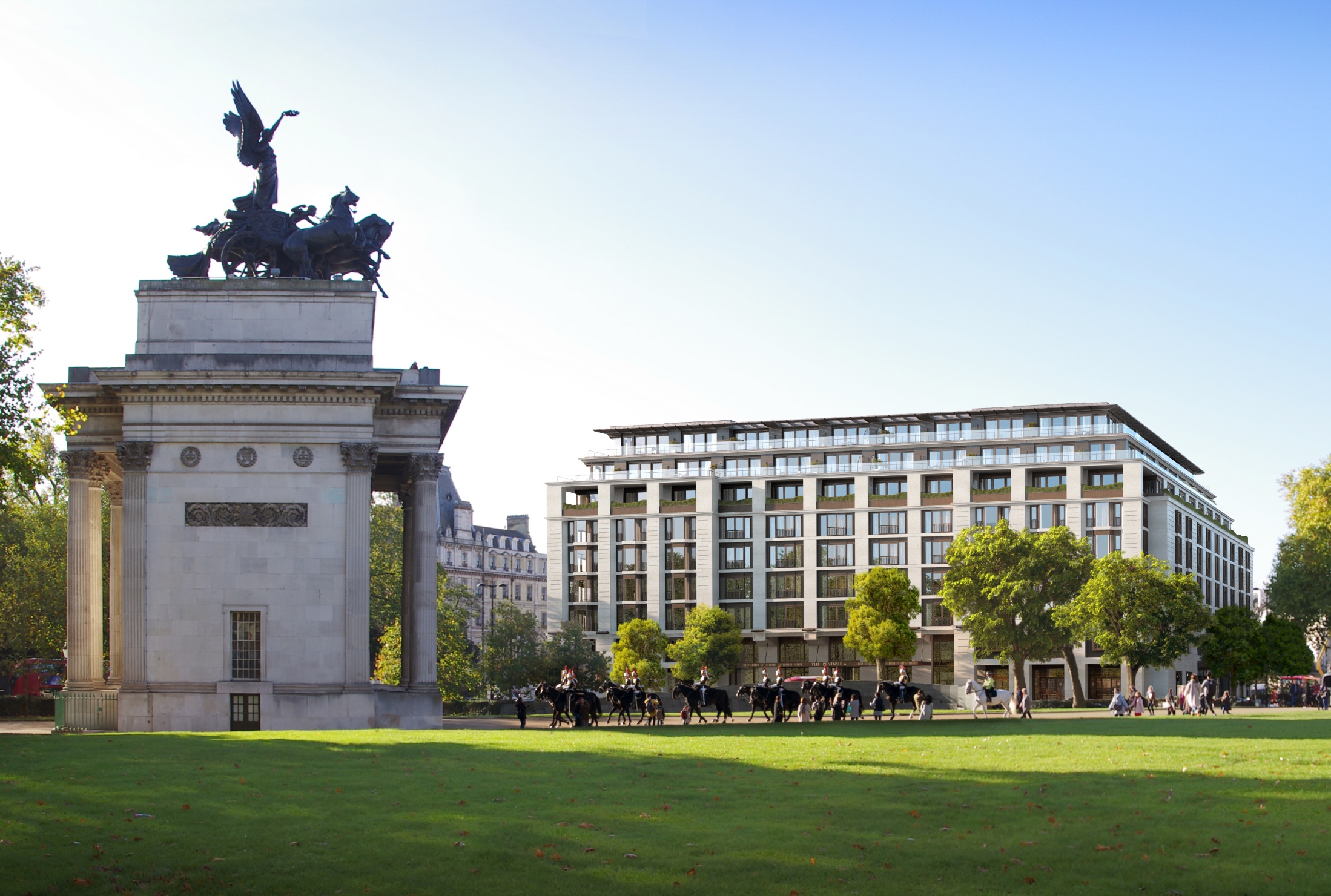
The English capital has its fair share of hotels with landmark addresses. But The Peninsula London may well steal the scene when it welcomes guests in early 2023. In the heart of Belgravia, the 190 rooms here feature covetable views over Hyde Park Corner and the Wellington Arch, which means you’re mere steps from Buckingham Palace—and just a few more from the iconic River Thames.
The design throughout the restored former office building reflects this prestigious position, from the grand colonnaded courtyard to the luxe destination spa and no-expense-spared rooms, which come courtesy of architect and interiors whiz Peter Marino, who counts Chanel, Dior, Louis Vuitton and Bulgari among his clients. While the hotel is keeping quiet on the specifics of its forthcoming dining offerings, we’re told there will be four marquee restaurants to choose from, with an emphasis on British culinary traditions.
Island Idyll
The 230 islands of the Greek archipelago host millions of tourists annually, most of them flocking to Santorini and Mykonos—for good reason. If you want to sidestep the crowds but still enjoy the colour of the Cyclades, set sail for dreamy Sifnos and set your sights on Villa Calder.
Wake up in this out-of-town aerie with just 13 of your closest friends, your horizon-bending outlook melting over a private infinity pool before carving through groves of fragrant olive and fig trees that tier to the sea. Everything feels remote, yet you’re just a short walk from village squares where grandmothers gossip on polished marble steps lined with geraniums, the aroma of orange-and-anise biscuits drifting down narrow lanes.
You may wish to call on the services of a private chef to prepare Sifniot specialties while you watch the day disappear. At other times, arrange for the Villa Calder concierge to host hikes through wind-chiselled valleys perfumed with sage and oregano; prepare beach chairs overlooking fishing boats bobbing far offshore like rainbow pelicans; plan for a photographer to guide you to the island’s most postcard-worthy sights, whether whitewashed, blue-domed churches or crumbling monasteries in the clouds. Time stands still here, in the best possible way.
Subscribe to the Newsletter
Recommended for you
For Peat’s Sake: Scotland’s ‘Whisky Island’
There’s a reason Islay produces some of the world’s most characterful whisky. And it’s hidden in the undergrowth.
By Nick Ryan
July 22, 2024
How Paris’s Dining, Hotel and Art Scene Got Their Groove Back — Just in Time for the Olympics
The French capital’s cultural life was already on the upswing. Mix in a major global sporting event, and it’s now ready to go toe to toe with any city in the world.
By Vivian Song
July 9, 2024
You may also like.
By Josh Bozin
24/07/2024
You may also like.
5 Lounge Chairs That Add Chic Seating to Your Space
Daybeds, the most relaxed of seating solutions, offer a surprising amount of utility.
Chaise longue, daybed, recamier, duchesse brisée—elongated furniture designed for relaxing has a roster of fancy names. While the French royal court of Louis XIV brought such pieces to prominence in fashionable European homes, the general idea has been around far longer: The Egyptian pharaohs were big fans, while daybeds from China’s Ming dynasty spurred all those Hollywood Regency fretwork pieces that still populate Palm Beach living rooms. Even Mies van der Rohe, one of design’s modernist icons, got into the lounge game with his Barcelona couch, a study of line and form that holds up today.
But don’t get caught up in who invented them, or what to call them. Instead, consider their versatility: Backless models are ideal in front of large expanses of glass (imagine lazing on one with an ocean view) or at the foot of a bed, while more structured pieces can transform any corner into a cozy reading nook. Daybeds may be inextricably linked to relaxation, but from a design perspective, they put in serious work.

Emmy, Egg Collective
In designing the Emmy chaise, the Egg Collective trio of Stephanie Beamer, Crystal Ellis and Hillary Petrie, who met as students at Washington University in St. Louis, aimed for versatility. Indeed, the tailored chaise looks equally at home in a glass skyscraper as it does in a turn-of-the-century town house. Combining the elegance of a smooth, solid oak or walnut frame with the comfort of bolsters and cushioned upholstery or leather, it works just as well against a wall or at the heart of a room. From around $7,015; Eggcollective.com
 Plum, Michael Robbins
Plum, Michael Robbins
Woodworker Michael Robbins is the quintessential artisan from New York State’s Hudson Valley in that both his materials and methods pay homage to the area. In fact, he describes his style as “honest, playful, elegant and reflective of the aesthetic of the Hudson Valley surroundings”. Robbins crafts his furniture by hand but allows the wood he uses to help guide the look of a piece. (The studio offers eight standard finishes.) The Plum daybed, brought to life at Robbins’s workshop, exhibits his signature modern rusticity injected with a hint of whimsy thanks to the simplicity of its geometric forms. Around $4,275; MichaelRobbins.com

Kimani, Reda Amalou Design
French architect and designer Reda Amalou acknowledges the challenge of creating standout seating given the number of iconic 20th-century examples already in existence. Still, he persists—and prevails. The Kimani, a bent slash of a daybed in a limited edition of eight pieces, makes a forceful statement. Its leather cushion features a rolled headrest and rhythmic channel stitching reminiscent of that found on the seats of ’70s cars; visually, these elements anchor the slender silhouette atop a patinated bronze base with a sure-handed single line. The result: a seamless contour for the body. Around $33,530; RedaAmalou
Dune, Workshop/APD
From a firm known for crafting subtle but luxurious architecture and interiors, Workshop/APD’s debut furniture collection is on point. Among its offerings is the leather-wrapped Dune daybed. With classical and Art Deco influences, its cylindrical bolsters are a tactile celebration, and the peek of the curved satin-brass base makes for a sensual surprise. Associate principal Andrew Kline notes that the daybed adeptly bridges two seating areas in a roomy living space or can sit, bench-style, at the foot of a bed. From $13,040; Workshop/ APD
Sherazade, Edra
Designed by Francesco Binfaré, this sculptural, minimalist daybed—inspired by the rugs used by Eastern civilizations—allows for complete relaxation. Strength combined with comfort is the name of the game here. The Sherazade’s structure is made from light but sturdy honeycomb wood, while next-gen Gellyfoam and synthetic wadding aid repose. True to Edra’s amorphous design codes, it can switch configurations depending on the user’s mood or needs; for example, the accompanying extra pillows—one rectangular and one cylinder shaped— interchange to become armrests or backrests. From $32,900; Edra
You may also like.
By Josh Bozin
24/07/2024
22/07/2024
Watches & Wonders 2024 Showcase: Hermès
We head to Geneva for the Watches & Wonders exhibition; a week-long horological blockbuster featuring the hottest new drops, and no shortage of hype.
With Watches & Wonders 2024 well and truly behind us, we review some of the novelties Hermès presented at this year’s event.
—
HERMÈS

Moving away from the block colours and sporty aesthetic that has defined Hermès watches in recent years, the biggest news from the French luxury goods company at Watches & Wonders came with the unveiling of its newest collection, the Hermès Cut.
It flaunts a round bezel, but the case middle is nearer to a tonneau shape—a relatively simple design that, despite attracting flak from some watch aficionados, works. While marketed as a “women’s watch”, the Cut has universal appeal thanks to its elegant package and proportions. It moves away from the Maison’s penchant for a style-first product; it’s a watch that tells the time, not a fashion accessory with the ability to tell the time.
Hermès gets the proportions just right thanks to a satin-brushed and polished 36 mm case, PVD-treated Arabic numerals, and clean-cut edges that further accentuate its character. One of the key design elements is the positioning of the crown, boldly sitting at half-past one and embellished with a lacquered or engraved “H”, clearly stamping its originality. The watch is powered by a Hermès Manufacture movement H1912, revealed through its sapphire crystal caseback. In addition to its seamlessly integrated and easy-wearing metal bracelet, the Cut also comes with the option for a range of coloured rubber straps. Together with its clever interchangeable system, it’s a cinch to swap out its look.
It will be interesting to see how the Hermès Cut fares in coming months, particularly as it tries to establish its own identity separate from the more aggressive, but widely popular, Ho8 collection. Either way, the company is now a serious part of the dialogue around the concept of time.
—
Read more about this year’s Watches & Wonders exhibition at robbreport.com.au
You may also like.
22/07/2024
Living La Vida Lagerfeld
The world remembers him for fashion. But as a new tome reveals, the iconoclastic designer is defined as much by extravagant, often fantastical, homes as he is clothes.
“Lives, like novels, are made up of chapters”, the world-renowned bibliophile, Karl Lagerfeld, once observed.
Were a psychological-style novel ever to be written about Karl Lagerfeld’s life, it would no doubt give less narrative weight to the story of his reinvigoration of staid fashion houses like Chloe, Fendi and Chanel than to the underpinning leitmotif of the designer’s constant reinvention of himself.
In a lifetime spanning two centuries, Lagerfeld made and dropped an ever-changing parade of close friends, muses, collaborators and ambiguous lovers, as easily as he changed his clothes, his furniture… even his body. Each chapter of this book would be set against the backdrop of one of his series of apartments, houses and villas, whose often wildly divergent but always ultra-luxurious décor reflected the ever-evolving personas of this compulsively public but ultimately enigmatic man.
With the publication of Karl Lagerfeld: A Life in Houses these wildly disparate but always exquisite interiors are presented for the first time together as a chronological body of work. The book indeed serves as a kind of visual novel, documenting the domestic dreamscapes in which the iconic designer played out his many lives, while also making a strong case that Lagerfeld’s impact on contemporary interior design is just as important, if not more so, than his influence on fashion.

In fact, when the first Lagerfeld interior was featured in a 1968 spread for L’OEil magazine, the editorial describes him merely as a “stylist”. The photographs of the apartment in an 18th-century mansion on rue de Université, show walls lined with plum-coloured rice paper, or lacquered deepest chocolate brown in sharp contrast to crisp, white low ceilings that accentuated the horizontality that was fashionable among the extremely fashionable at the time. Yet amid this setting of aggressively au courant modernism, the anachronistic pops of Art Nouveau and Art Deco objects foreshadow the young Karl’s innate gift for creating strikingly original environments whose harmony is achieved through the deft interplay of contrasting styles and contexts.
Lagerfeld learned early on that presenting himself in a succession of gem-like domestic settings was good for crafting his image. But Lagerfeld’s houses not only provided him with publicity, they also gave him an excuse to indulge in his greatest passion. Shopping!
By 1973, Lagerfeld was living in a new apartment at Place Saint–Sulpice where his acquisition of important Art Deco treasures continued unabated. Now a bearded and muscular disco dandy, he could most often be found in the louche company of the models, starlets and assorted hedonistic beauties that gathered around the flamboyant fashion illustrator Antonio Lopez. Lagerfeld was also in the throes of a hopeless love affair with Jacques de Bascher whose favours he reluctantly shared with his nemesis Yves Saint Laurent.

He painted the rooms milky white and lined them with specially commissioned carpets—the tawny patterned striations of which invoked musky wild animal pelts. These lent a stark relief to the sleek, machine-age chrome lines of his Deco furnishings. To contemporary eyes it remains a strikingly original arrangement that subtly conveys the tensions at play in Lagerfeld’s own life: the cocaine fuelled orgies of his lover and friends, hosted in the pristine home of a man who claimed that “a bed is for one person”.
In 1975, a painful falling out with his beloved Jacques, who was descending into the abyss of addiction, saw almost his entire collection of peerless Art Deco furniture, paintings and objects put under the auctioneer’s hammer. This was the first of many auction sales, as he habitually shed the contents of his houses along with whatever incarnation of himself had lived there. Lagerfeld was dispassionate about parting with these precious goods. “It’s collecting that’s fun, not owning,” he said. And the reality for a collector on such a Renaissance scale, is that to continue buying, Lagerfeld had to sell.
Of all his residences, it was the 1977 purchase of Hôtel Pozzo di Borgo, a grand and beautifully preserved 18th-century house, that would finally allow him to fulfill his childhood fantasies of life in the court of Madame de Pompadour. And it was in this aura of Rococó splendour that the fashion designer began to affect, along with his tailored three-piece suits, a courtier’s ponytailed and powdered coif and a coquettish antique fan: marking the beginning of his transformation into a living, breathing global brand that even those with little interest in fashion would immediately recognise.

Lagerfeld’s increasing fame and financial success allowed him to indulge in an unprecedented spending frenzy, competing with deep-pocketed institutions like the Louvre to acquire the finest, most pedigreed pearls of the era—voluptuously carved and gilded bergères; ormolu chests; and fleshy, pastel-tinged Fragonard idylls—to adorn his urban palace. His one-time friend André Leon Talley described him in a contemporary article as suffering from “Versailles complex”.
However, in mid-1981, and in response to the election of left-wing president, François Mitterrand, Lagerfeld, with the assistance of his close friend Princess Caroline, became a resident of the tax haven of Monaco. He purchased two apartments on the 21st floor of Le Roccabella, a luxury residential block designed by Gio Ponti. One, in which he kept Jacques de Bascher, with whom he was now reconciled, was decorated in the strict, monochromatic Viennese Secessionist style that had long underpinned his aesthetic vocabulary; the other space, though, was something else entirely, cementing his notoriety as an iconoclastic tastemaker.

Lagerfeld had recently discovered the radically quirky designs of the Memphis Group led by Ettore Sottsass, and bought the collective’s entire first collection and had it shipped to Monaco. In a space with no right angles, these chaotically colourful, geometrically askew pieces—centred on Masanori Umeda’s famous boxing ring—gave visitors the disorientating sensation of having entered a corporeal comic strip. By 1991, the novelty of this jarring postmodern playhouse had inevitably worn thin and once again he sent it all to auction, later telling a journalist that “after a few years it was like living in an old Courrèges. Ha!”

In 1989, de Bascher died of an AIDS-related illness, and while Lagerfeld’s career continued to flourish, emotionally the famously stoic designer was struggling. In 2000, a somewhat corpulent Lagerfeld officially ended his “let them eat cake” years at the Hôtel Pozzo di Borgo, selling its sumptuous antique fittings in a massive headline auction that stretched over three days. As always there were other houses, but now with his longtime companion dead, and his celebrity metastasising making him a target for the paparazzi, he began to look less for exhibition spaces and more for private sanctuaries where he could pursue his endless, often lonely, work.
His next significant house was Villa Jako, named for his lost companion and built in the 1920s in a nouveau riche area of Hamburg close to where he grew up. Lagerfeld shot the advertising campaign for Lagerfeld Jako there—a fragrance created in memorial to de Bascher. The house featured a collection of mainly Scandinavian antiques, marking the aesthetic cusp between Art Nouveau and Art Deco. One of its rooms Lagerfeld decorated based on his remembrances of his childhood nursery. Here, he locked himself away to work—tellingly—on a series of illustrations for the fairy tale, The Emperor’s New Clothes. Villa Jako was a house of deep nostalgia and mourning.
But there were more acts—and more houses—to come in Lagerfeld’s life yet. In November 2000, upon seeing the attenuated tailoring of Hedi Slimane, then head of menswear at Christian Dior, the 135 kg Lagerfeld embarked on a strict dietary regime. Over the next 13 months, he melted into a shadow of his former self. It is this incarnation of Lagerfeld—high white starched collars; Slimane’s skintight suits, and fingerless leather gloves revealing hands bedecked with heavy silver rings—that is immediately recognisable some five years after his death.
The 200-year-old apartment in Quái Voltaire, Paris, was purchased in 2006, and after years of slumber Lagerfeld—a newly awakened Hip Van Winkle—was ready to remake it into his last modernist masterpiece. He designed a unique daylight simulation system that meant the monochromatic space was completely without shadows—and without memory. The walls were frosted and smoked glass, the floors concrete and silicone; and any hint of texture was banned with only shiny, sleek pieces by Marc Newson, Martin Szekely and the Bouroullec Brothers permitted. Few guests were allowed into this monastic environment where Lagerfeld worked, drank endless cans of Diet Coke and communed with Choupette, his beloved Birman cat, and parts of his collection of 300,000 books—one of the largest private collections in the world.

Lagerfeld died in 2019, and the process of dispersing his worldly goods is still ongoing. The Quái Voltaire apartment was sold this year for US$10.8 million (around $16.3 million). Now only the rue de Saint-Peres property remains within the Lagerfeld trust. Purchased after Quái Voltaire to further accommodate more of his books—35,000 were displayed in his studio alone, always stacked horizontally so he could read the titles without straining his neck—and as a place for food preparation as he loathed his primary living space having any trace of cooking smells. Today, the rue de Saint-Peres residence is open to the public as an arts performance space and most fittingly, a library.
You may also like.
By Josh Bozin
24/07/2024
Watch This Space: Mike Nouveau
Meet the game-changing horological influencers blazing a trail across social media—and doing things their own way.
In the thriving world of luxury watches, few people own a space that offers unfiltered digital amplification. And that’s precisely what makes the likes of Brynn Wallner, Teddy Baldassarre, Mike Nouveau and Justin Hast so compelling.
These thought-provoking digital crusaders are now paving the way for the story of watches to be told, and shown, in a new light. Speaking to thousands of followers on the daily—mainly via TikTok, Instagram and YouTube—these progressive commentators represent the new guard of watch pundits. And they’re swaying the opinions, and dollars, of the up-and-coming generations who now represent the target consumer of this booming sector.
—
MIKE NOUVEAU

Can we please see what’s on the wrist? That’s the question that catapulted Mike Nouveau into watch stardom, thanks to his penchant for highlighting incredibly rare timepieces across his TikTok account of more than 400,000 followers. When viewing Nouveau’s attention-grabbing video clips—usually shot in a New York City neighbourhood—it’s not uncommon to find him wrist-rolling some of the world’s rarest timepieces, like the million-dollar Cartier Cheich (a clip he posted in May).
But how did someone without any previous watch experience come to amass such a cult following, and in the process gain access to some of the world’s most coveted timepieces? Nouveau admits had been a collector for many years, but moved didn’t move into horology full-time until 2020, when he swapped his DJing career for one as a vintage watch specialist.
“I probably researched for a year before I even bought my first watch,” says Nouveau, alluding to his Rolex GMT Master “Pepsi” ref. 1675 from 1967, a lionised timepiece in the vintage cosmos. “I would see deals arise that I knew were very good, but they weren’t necessarily watches that I wanted to buy myself. I eventually started buying and selling, flipping just for fun because I knew how to spot a good deal.”
Nouveau claims that before launching his TikTok account in the wake of Covid-19, no one in the watch community knew he existed. “There really wasn’t much watch content, if any, on TikTok before I started posting, especially talking about vintage watches. There’s still not that many voices for vintage watches, period,” says Nouveau. “It just so happens that my audience probably skews younger, and I’d say there are just as many young people interested in vintage watches as there are in modern watches.”
View this post on Instagram
Nouveau recently posted a video to his TikTok account revealing that the average price of a watch purchased by Gen Z is now almost US$11,000 (around $16,500), with 41 percent of them coming into possession of a luxury watch in the past 12 months.
“Do as much independent research as you can [when buying],” he advises. “The more you do, the more informed you are and the less likely you are to make a mistake. And don’t bring modern watch expectations to the vintage world because it’s very different. People say, ‘buy the dealer’, but I don’t do that. I trust myself and myself only.”
—
Read more about the influencers shaking up horology here with Justin Hast, Brynn Wallner and Teddy Baldassare.
You may also like.
By Josh Bozin
24/07/2024
This Pristine 1960 Ferrari 250 Spider Could Fetch $24 Million at Auction
The car wears the same colours and has the same engine it left the factory with.
Some Ferraris are just a little bit more important than others.
Take, for example, the 1960 250 GT SWB California that RM Sotheby’s is auctioning off during this year’s Monterey Car Week. Any example of the open-top beauty would attract interest, but this one just so happens to be the first one that was built.
The 250 is one of the most legendary series of cars in Ferrari history. Between 1952 and 1964, the company released 21 different 250 models—seven for racetracks, 14 for public roads—of which the “Cali Spider” might be the most well regarded, thanks to its potent V-12 and a Pininfarina-penned design that is one of the most beautiful bodies to grace an automobile. The roadster, which was specifically built for the U.S., made its debut in 1957 as a long-wheel-base model (LWB), but it wasn’t until the SWB model debut in 1960 that it became clear how special it was. This example isn’t just the first to roll off the line. It’s the actual car that was used to introduce the world to the model at the 1960 Geneva Motor Show.

Just 56 examples of the 250 GT SWB California Spider would be built by Scaglietti during the three years it was in production. The first of those, chassis 1795 GT, is finished in a glossy coat of Grigio. The two-door had a red leather interior at Geneva but was returned to the factory and re-outfitted with black leather upholstery before being delivered to its original owner, British race car driver John Gordon Bennet. Six-and-a-half decades later the car looks identical to how it did when it left the factory the second time.

In addition to its original bodywork, the chassis 1795 GT features its original engine, gearbox, and rear axle. That mill is the competition-spec Tipo 168, a 3.0-litre V-12 that makes 196.1 kW. That may not sound like much by today’s standards, but, when you consider that the 250 GT SWB California Spider tips the scales around 952 kilograms, it’s more than enough.

The first 250 GT SWB California Spider is scheduled to go up for bid during RM Sotheby’s annual Monterey Car Week auction, which runs from Thursday, August 15, to Saturday, August 17. Unsurprisingly, the house has quite high hopes for the car. The car carries an estimate of between $24 million and $26 million, which could make it one of the most expensive cars ever sold at auction.

You may also like.
By Josh Bozin
24/07/2024



















